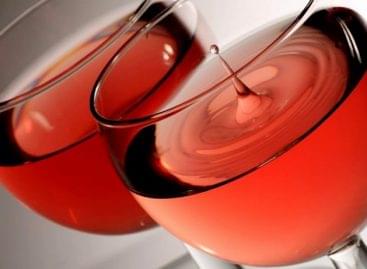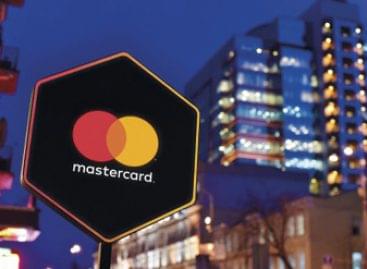Champagne consumption is decreasing internationally, but increasing domestically
Champagne has always been a symbol of luxury, associated with celebration and special occasions. However, the latest global trends and market changes show that champagne consumption may take a new direction worldwide and in Hungary. Where is the demand for champagne heading in the market? Overview of the Esterházy Champagne Factory.
Change in the international champagne market
 The world champagne market underwent significant changes in 2024. According to the data, global champagne shipments decreased to 271.4 million bottles, a 9.2% decline compared to the previous year. The United States remains the largest export market, but champagne consumption has also decreased in France and the United Kingdom, which can be explained by economic uncertainty and a decrease in demand for luxury products. Younger generations, especially Generation Z, are increasingly turning to non-alcoholic beverages. There is growing evidence that Gen Z and Gen Y in key markets such as the United States are turning away from alcohol, often opting for non-alcoholic cocktails instead, while baby boomers are retiring and spending less on wine and champagne.
The world champagne market underwent significant changes in 2024. According to the data, global champagne shipments decreased to 271.4 million bottles, a 9.2% decline compared to the previous year. The United States remains the largest export market, but champagne consumption has also decreased in France and the United Kingdom, which can be explained by economic uncertainty and a decrease in demand for luxury products. Younger generations, especially Generation Z, are increasingly turning to non-alcoholic beverages. There is growing evidence that Gen Z and Gen Y in key markets such as the United States are turning away from alcohol, often opting for non-alcoholic cocktails instead, while baby boomers are retiring and spending less on wine and champagne.
Post-pandemic champagne demand peaked in 2022, when shipments reached 326 million bottles, but has been on a steady decline since then. In 2023, around 299 million bottles were shipped, a decline of more than 8%.
The trend is different at home
 While the global market is experiencing a decline, the trends are pointing in a different direction at home. According to the Statista Market Forecast 2025, the Hungarian champagne market is expected to reach a total annual revenue of USD 50.9 million. Of this, 31.5 million USD comes from home retail sales, while 19.4 million USD comes from hospitality (HoReCa) sales. Per capita home consumption is 0.27 liters per year.
While the global market is experiencing a decline, the trends are pointing in a different direction at home. According to the Statista Market Forecast 2025, the Hungarian champagne market is expected to reach a total annual revenue of USD 50.9 million. Of this, 31.5 million USD comes from home retail sales, while 19.4 million USD comes from hospitality (HoReCa) sales. Per capita home consumption is 0.27 liters per year.
According to the 2023 data of the Hungarian Central Statistical Office, domestic sparkling wine production has reached significant proportions: the total annual production reached 15.16 million liters, of which 13.92 million liters were sold. This represented a net sales revenue of 13.7 billion forints for the sector. It is particularly noteworthy that the products of 17 domestic sparkling wine companies are in significant demand not only domestically but also abroad – 29% of total sales, approximately 4 million liters, were exported, which brought in 2.89 billion forints in revenue. Domestic consumers purchased nearly 10 million liters of sparkling wine, worth 10.81 billion forints.
“More and more people are interested in the technology of champagne production and quality Hungarian champagnes,” said Mihály Séra, one of the owners and champagne master of the Esterházy Champagne Factory. “While consumption used to be concentrated mainly on festive periods, today people are looking for quality domestic champagnes all year round. We are also experiencing that more and more people are interested in the process of champagne production, not only tasting, but also the small details of production, and more and more people are interested in the history of champagne production and the rustic building itself. Moreover, more and more people are holding their weddings in such a special place,”
he added. The building, built in 1772 and under monument protection, was designed by one of the most significant creators of Hungarian Baroque, Jakab Fellner, which in itself lends the location a special value.
Related news
The kings of the New Year’s Eve list: hot dogs and champagne in abundance
🎧 Hallgasd a cikket: Lejátszás Szünet Folytatás Leállítás Nyelv: Auto…
Read more >Hungarian champagne crowns the end-of-year holidays!
🎧 Hallgasd a cikket: Lejátszás Szünet Folytatás Leállítás Nyelv: Auto…
Read more >Nébih: labeling errors found in dry rosé sparkling wines
🎧 Hallgasd a cikket: Lejátszás Szünet Folytatás Leállítás Nyelv: Auto…
Read more >Related news
The 6 most important payment trends in 2026:
🎧 Hallgasd a cikket: Lejátszás Szünet Folytatás Leállítás Nyelv: Auto…
Read more >Tourism continues to expand dynamically
🎧 Hallgasd a cikket: Lejátszás Szünet Folytatás Leállítás Nyelv: Auto…
Read more >FEOSZ creates a certificate for consumer-friendly web stores
🎧 Hallgasd a cikket: Lejátszás Szünet Folytatás Leállítás Nyelv: Auto…
Read more >







